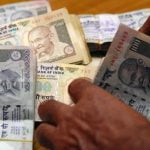 E-commerce currently employs less than a million people and a lion’s share of these are in logistics and warehousing, a note estimates. Photo: Bloomberg
E-commerce currently employs less than a million people and a lion’s share of these are in logistics and warehousing, a note estimates. Photo: Bloomberg
Mumbai: Indian e-commerce companies will have to pick up the slack left by traditional sectors such as agriculture, manufacturing and services in employment generation over the next 10 years, according to the British bank HSBC Holdings Plc.
India needs to generate a total of 80 million jobs by 2025, double that in the last 10 years. Taking into account both demand and supply of jobs, existing labour-intensive sectors like agriculture and services may not be able to meet the entire demand, HSBC analysts Pranjul Bhandari and Prithviraj Srinivas wrote in a note on Wednesday.
“Armed with both demand and supply for new jobs, we find that without e-commerce, India would have 24 million missing jobs. With a potential of creating 12 million new jobs in ten years, e-commerce fills half of this shortfall,” the research note said.
“With the rise of online purchases, e-commerce could create 20 million gross jobs across logistics and delivery (70%), and customer care, IT & management (30%). Some jobs will be lost in bricks-and-mortar stores. We model this carefully and find that, on net, e-commerce could create 12 million new jobs,” the note added.
E-commerce currently employs less than a million people and a lion’s share of these are in logistics and warehousing, the note estimates.
E-commerce companies are firms that offer products and services through the internet and operate under three models currentlyL business-to-customer (B2C), customer-to-customer (C2C) and business-to-business (B2B). Examples of B2C would be Flipkart, Snapdeal, and Uber, those of C2C would be Quickr and OLX.com and B2B entities are portals such as tolexo.com and amazonbusinesses.com.
HSBC has focused on business-to-customer (B2C) model in the e-commerce space but it also includes food delivery services and travel booking sites such as makemytrip.com.
What will drive this employment generation by e-commerce firms are ongoing technological advances, the adoption of internet and smartphones at a rapid pace and reforms in banking. Moreover, India lags China by seven years in internet penetration and online shopping, said HSBC.
Because of the largely unorganized nature of India’s retail sector, online transactions will take off as they offer convenience to a young population more open to adopting new ways of consuming and doing business, the report said.
HSBC estimates that sales on e-commerce portals are less than 2% of total consumption of Indians currently but this could rise to 16% by 2025.
However, the country being a largely cash-based economy with 60% of e-commerce transactions being settled in cash, a faster adoption of digital payment methods is key for these firms to reduce their cost.
The rising popularity of mobile wallets, the Reserve Bank of India and the government’s push for digital payment systems and the mandate for new banks to have technologically enabled services from day one will help online portals, the note said.
Mobile payments more than doubled in fiscal 2016 but still form less than 3% of all other methods used to make payments by customers.
Online portals would not only create a quarter of the 80 million jobs but also these jobs would involve highly productive work, HSBC said. Direct e-commerce jobs are captured in the retail trade and transport services sectors.
“Our analysis suggests that labour productivity in these two sectors is higher than labour productivity in agriculture, where about half of India’s labour work, or construction, where most of India’s new jobs are getting created,” the banks’ research note said.
Job creation would not be limited to urban centres for e-commerce players, HSBC said. The bank’s analysts estimate that 5 million village merchants could come under the fold of online business. But this hinges on India’s ability to fix infrastructure inadequacies quickly.
In fact, the report warns that supply-side responses should match the rapid rise of online business lest the latter becomes inflationary.
“It is easy to imagine a situation where e-commerce takes off at the cost of macro stability. For instance, if consumption demand shoots up without adequate supply-side response, for instance in India’s physical infrastructure roll-out, it could quickly become inflationary,” the note said.
[“Source-Livemint”]




